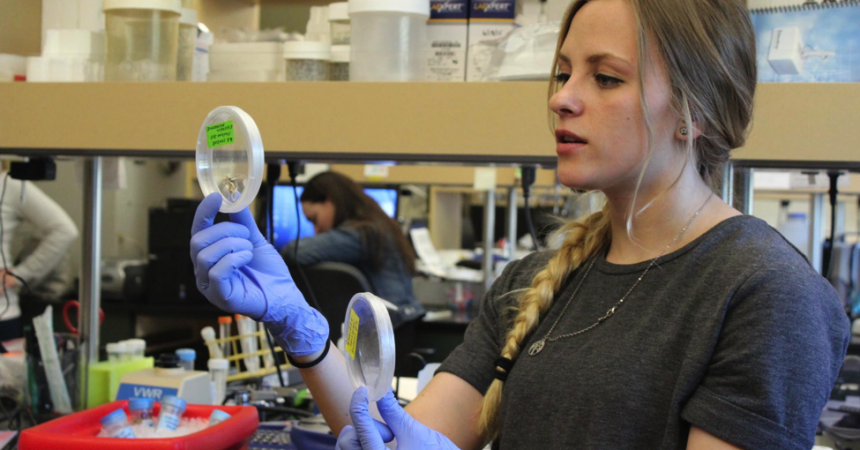Zoo InternQuest is a seven-week career exploration program for San Diego County high school juniors and seniors. Students have the unique opportunity to meet professionals working for the San Diego Zoo, Safari Park, and Institute for Conservation Research, learn about their jobs, and then blog about their experience online. Follow their adventures here on the Zoo’s website!
 For this session of the InternQuest, we met a man named Oliver Ryder. Dr. Ryder works in the conservation genetics field. This field studies how DNA can be used to help save animals from going extinct. DNA is an important part of every living thing in the world. Think of it like the blueprints of an animal. The cells that make up living things need a guide on how to build the animal, and the DNA is that guide.
For this session of the InternQuest, we met a man named Oliver Ryder. Dr. Ryder works in the conservation genetics field. This field studies how DNA can be used to help save animals from going extinct. DNA is an important part of every living thing in the world. Think of it like the blueprints of an animal. The cells that make up living things need a guide on how to build the animal, and the DNA is that guide.
However, Dr. Ryder didn’t start in this field. When he first got out of college, the field of conservation genetics didn’t even exist! When he was in high school, he just wanted to help with conservation. This desire was fueled by one of the classes he took. However, he eventually joined the field in the hopes of using genomics to help with the conservation of animals. Genomics is the study of how DNA works in each living thing, and Dr. Ryder hopes that his research will help scientists find ways to get rid of nasty diseases that some animals are in danger of receiving.
Although Dr. Ryder works on very specific ailments of animals, you can help with conservation as well! As you have probably heard, doing things like saving water, turning off lights in rooms you aren’t using, and recycling can all lead to the conservation of wildlife. However, there are also more direct ways you can help if you are a dedicated wildlife hero. For example, you can make sure to only plant native species of plants in your garden ( native means that it already lives around your home in the wild). By doing this, you are not only keeping out invasive species that might kill other native plants, but you are also providing potential food or shelter to other native animals!
Activity: Frozen vs. Room Temp
While we were at the Beckman Center, we learned that the cells of many different species of animals are kept in a place called the Frozen Zoo. This containment area is used to store the cells of many different animals so that scientists have a way to study the DNA of them. This is very useful when you cannot otherwise have access to a certain animal, either because they are extinct or just not available.
However, the reason it is called the Frozen Zoo is because of the way that they store these cells. In order to preserve these cells, the scientists freeze them to keep them from decomposing. This same reasoning is why we use refrigerators. And with this experiment, you will be able to see why for yourself!
Objective: This experiment will give kids a way to visually see how biological material is better preserved in cold temperatures.
Step 1: Ask your parents permission before setting up this test. It is always a necessity to make sure you are allowed to perform experiments.
Step 2: Get two pieces of lunchmeat, and two ziploc bags.
Step 3: Place each piece of lunchmeat in a separate bag, close them, and place one bag in the refrigerator. Leave the other bag out in a place where you can observe it.
Step 4: Record what you see for the two different pieces of lunchmeat each day for a week. Make sure not to open the bags!
Step 5: After a week, compare the two bags side by side. The bag in the refrigerator should look a lot more appetizing than the other one! Make sure not to eat or open either though, because chances are they will smell pretty bad. Throw both bags away, and hypothesize why the refrigerator might work better in preserving lunch meat than just leaving it out. Do you think there are other foods that preserve better in a cold environment?
Coby, Kid’s Corner
Winter Session, 2017


